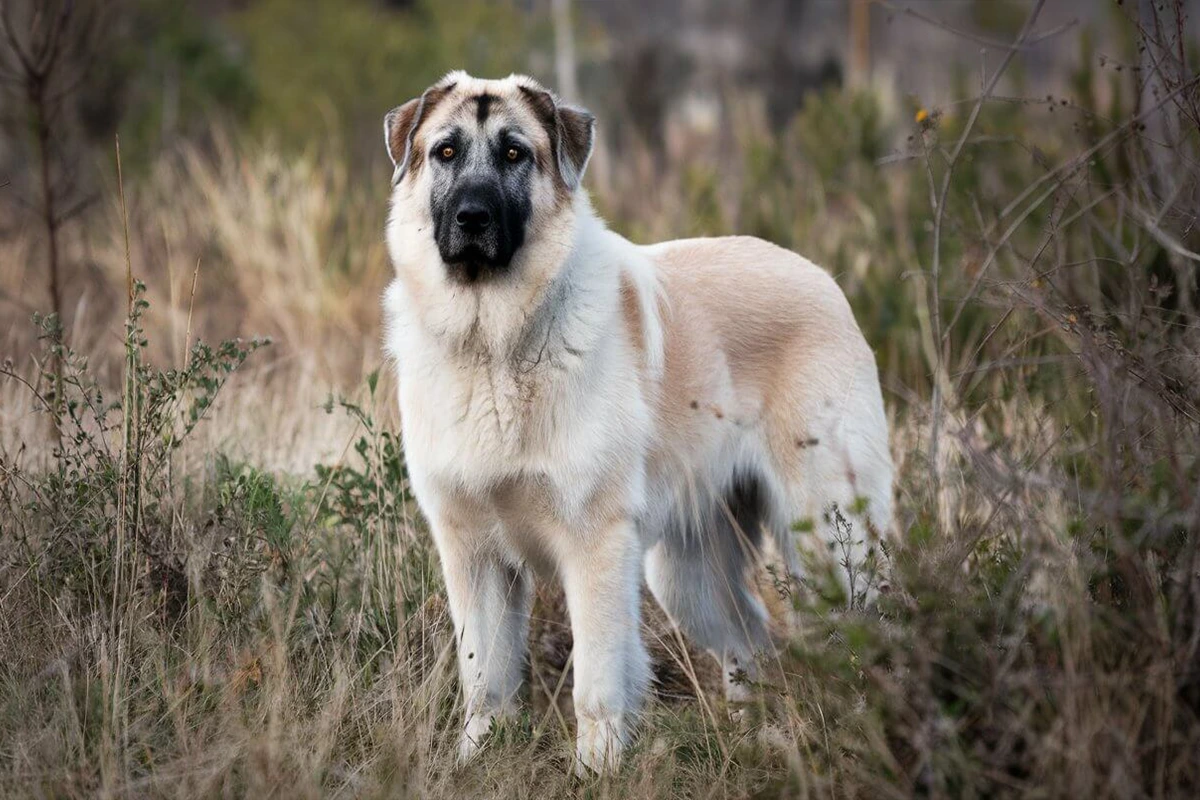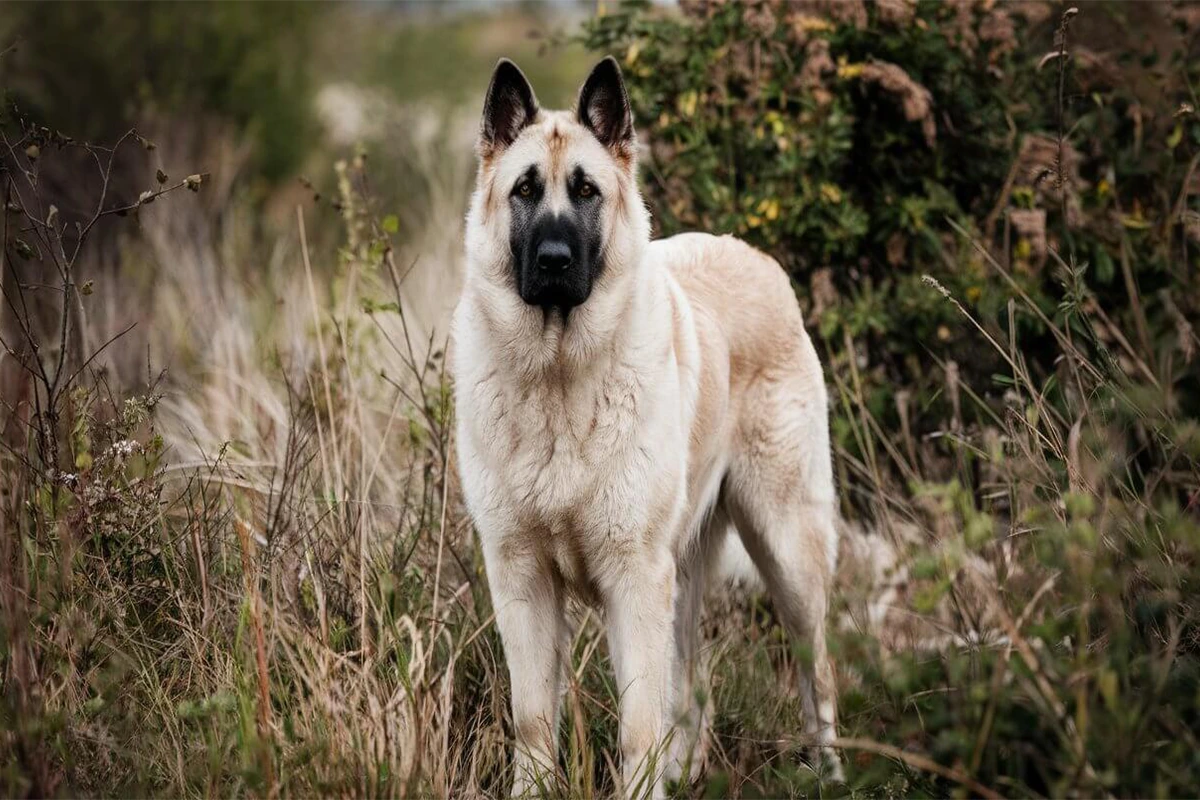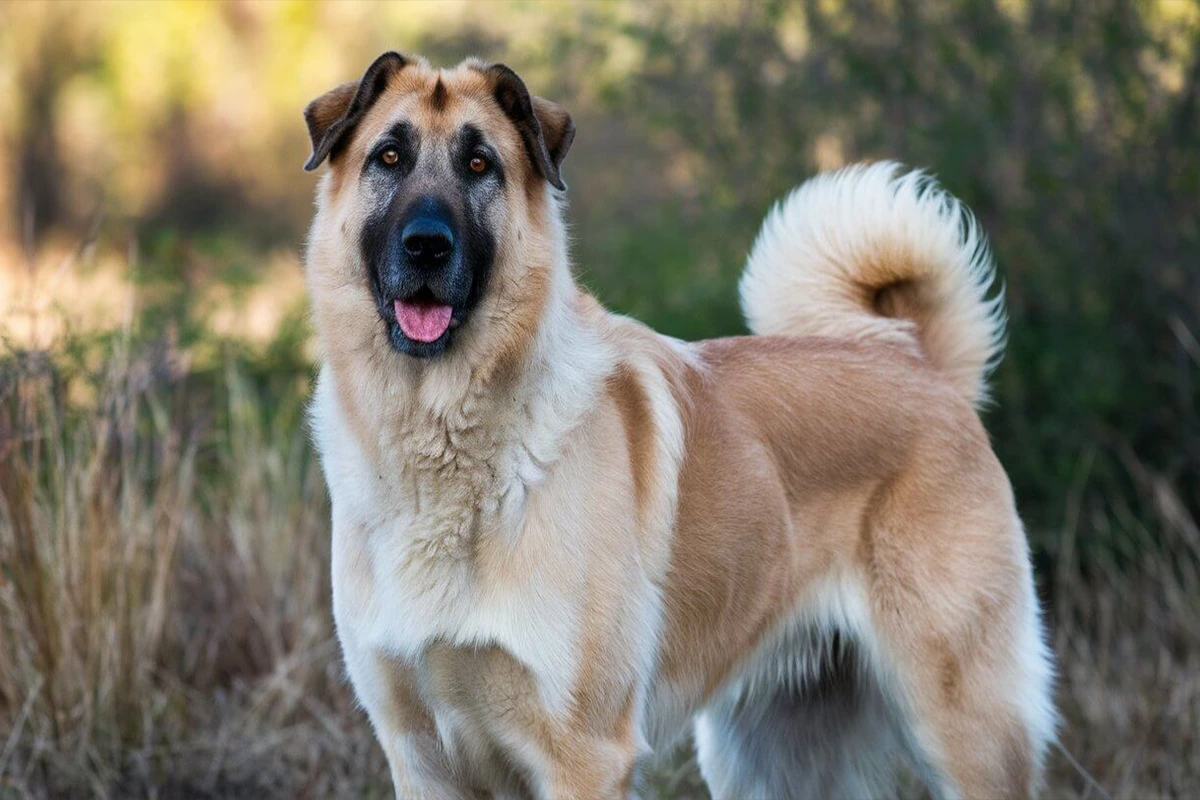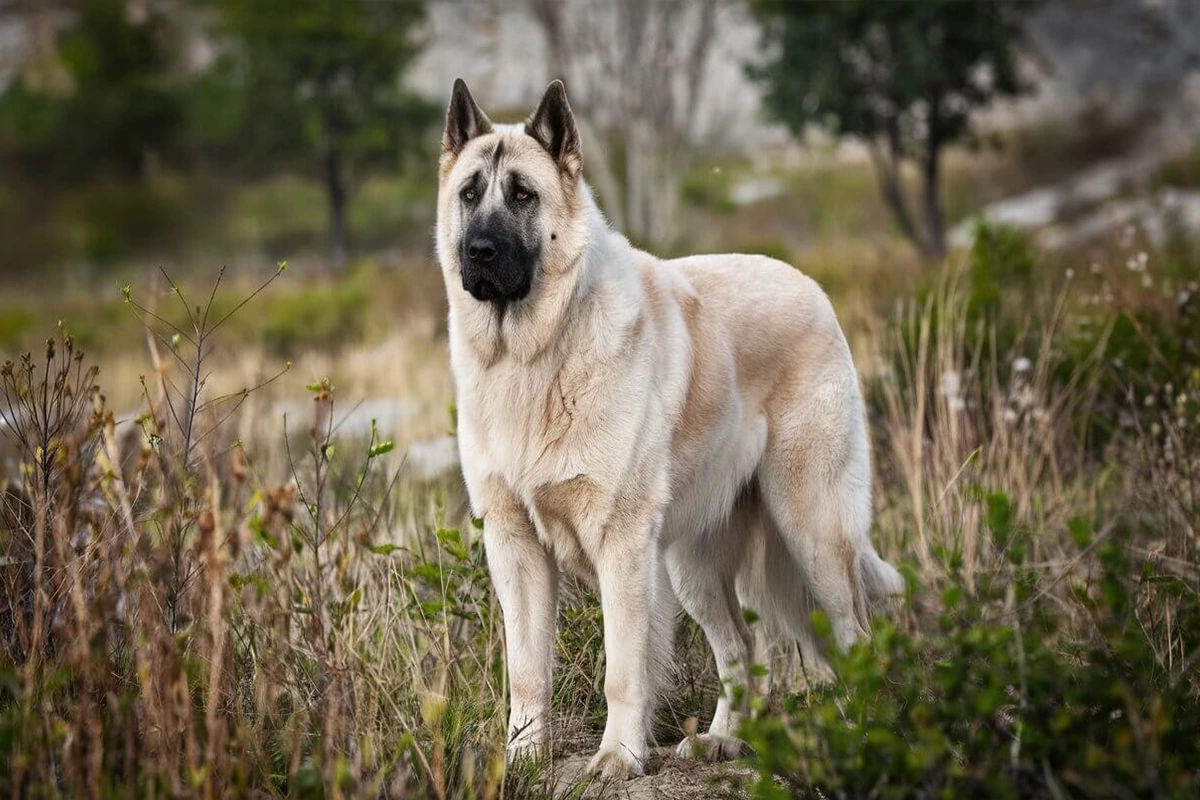The Anatolian Shepherd Dog is a remarkable breed with a history as vast and enduring as the Anatolian plains it hails from. Known for its unwavering loyalty and protective instincts, this large, powerful dog has been a steadfast guardian of livestock for centuries. Whether you’re looking for a devoted family companion or a vigilant protector for your property, the Anatolian Shepherd Dog stands out as a noble choice.

In this comprehensive guide, we’ll explore everything you need to know about the Anatolian Shepherd, from its fascinating origins and physical traits to its care, training, and health needs. By the end of this post, you’ll understand why this loyal protector has earned its place as one of the most cherished working dog breeds in the world. Whether you’re a first-time dog owner or an experienced handler, this guide will provide valuable insights to help you care for and appreciate this incredible breed.
History and Origins of the Anatolian shepherd dog
Anatolian Roots
The Anatolian Shepherd Dog traces its origins back thousands of years to the Anatolia region of modern-day Turkey. This vast, rugged land shaped the breed into the resilient and capable dog we know today. Archaeological evidence suggests that large guardian dogs, similar to the Anatolian Shepherd, have been present in this area for over 6,000 years, protecting flocks from predators like wolves, bears, and jackals.
These dogs were likely influenced by ancient breeds brought to Anatolia by traders and nomadic herders. Over centuries, they adapted to the harsh climates and challenging terrains, becoming a breed synonymous with endurance, intelligence, and unmatched loyalty. The Anatolian Shepherd is not just a dog but a living piece of history, embodying the heritage and culture of the region.
Livestock Guardianship
The Anatolian Shepherd’s primary role throughout history has been as a livestock guardian. Unlike herding dogs that guide animals, livestock guardian dogs like the Anatolian protect flocks from predators, often working independently. Their strong territorial instincts, coupled with their ability to make decisions without direct supervision, make them exceptional protectors.
Farmers in Anatolia relied on these dogs to safeguard sheep and goats, even in the absence of human oversight. They would live among the flock, forming strong bonds with the animals they were tasked to protect. Their thick coat provided insulation against extreme temperatures, while their large, muscular build deterred predators. This innate guardianship trait continues to be one of the breed’s defining characteristics, making them highly valued for farms and rural properties worldwide.
Recognition by Organizations
The Anatolian Shepherd Dog began gaining recognition outside Turkey in the mid-20th century, largely due to its impressive working abilities. The breed was introduced to the United States in the 1950s, where it quickly gained popularity as a livestock guardian and companion dog.
In 1996, the American Kennel Club (AKC) officially recognized the Anatolian Shepherd Dog, placing it in the Working Group. Other organizations, such as the United Kennel Club (UKC) and the Fédération Cynologique Internationale (FCI), also acknowledge the breed under their respective standards. Despite being recognized internationally, the Anatolian Shepherd remains a symbol of Turkish heritage and is celebrated for its role in preserving livestock farming traditions.
Today, the Anatolian Shepherd is a respected breed globally, valued not only for its historical significance but also for its versatility in modern roles, from guarding livestock to being a loyal family protector.
Physical Characteristics and Temperament
Size and Appearance
The Anatolian Shepherd Dog is a large, powerful breed known for its impressive stature and rugged build. Male animals usually reach a height of 29 to 32 inches at their shoulders. Female animals are a bit shorter, standing from 27 to 30 inches tall. Their weight can vary from 80 to 150 pounds, depending on their gender and overall build. This breed is not only large but also athletic, with a body designed for endurance and agility.
Their double coat, which can be short to medium in length, provides excellent protection against harsh weather conditions. Coat colors are varied, with common shades including fawn, white, brindle, or even spotted patterns. Many Anatolian Shepherds have a characteristic black mask and black ears, which add to their distinct appearance. Their bushy tail, often carried in a slight curl over the back, is another signature feature.
Despite their size, Anatolian Shepherds possess a balanced and symmetrical physique, exuding both strength and grace. Their keen, almond-shaped eyes convey intelligence and alertness, while their erect posture underscores their readiness to act as protectors.
Temperament
The Anatolian Shepherd Dog is celebrated for its independent and loyal temperament. Bred to work autonomously as a livestock guardian, this breed is highly intelligent and capable of making decisions without direct human input. Their primary instinct is to protect, which makes them naturally wary of strangers but deeply devoted to their families.
While their independence can sometimes be mistaken for stubbornness, it’s a testament to their working roots, where they had to rely on their judgment in the field. Proper training and early socialization are crucial to ensure they channel their protective instincts appropriately.
Anatolian Shepherds are known for their calm demeanor and patience, especially with children and other animals they view as part of their “flock.” However, their protective nature means they can be assertive or even aggressive if they sense a threat. Owners must establish themselves as confident and consistent leaders to earn the trust and respect of this intelligent breed.
Comparison with Related Breeds
The Anatolian Shepherd Dog shares similarities with other livestock guardian breeds, particularly those from the Anatolian region. However, there are distinct differences that set it apart:
- Kangal Dog: Often confused with the Anatolian Shepherd, the Kangal Dog is a separate breed also originating from Turkey. Kangals are generally more uniform in appearance, typically fawn-colored with a black mask, and are slightly more compact and muscular. Kangals are also known for their incredibly powerful bite force, making them highly effective against predators.
- Akbash Dog: Another Turkish breed, the Akbash Dog is slimmer and more elegant than the Anatolian Shepherd. Akbash dogs are predominantly white and are often less reserved around strangers compared to Anatolians. They share the same protective instincts but are generally less intimidating in appearance.
- Great Pyrenees: This European livestock guardian is similar in size and temperament to the Anatolian Shepherd but has a thicker, fluffier coat suited to colder climates. Great Pyrenees dogs are typically more sociable and gentle with strangers compared to the reserved Anatolian Shepherd.
Each of these breeds excels in livestock protection but offers unique traits that cater to different environments and owner preferences. The Anatolian Shepherd’s blend of independence, loyalty, and physical capability makes it a standout choice for those seeking a versatile guardian.
Care and Maintenance of Anatolian shepherd dog
Feeding and Diet
Anatolian Shepherds are large, active dogs with significant nutritional needs. Their diet must support their energy levels and maintain their overall health. High-quality commercial dog food, tailored to large or giant breeds, works well for this breed. Always choose a formula with real meat as the primary ingredient and avoid fillers like corn or soy.
Because Anatolians are prone to bloat, divide their daily food intake into two or more meals rather than one large serving. Overfeeding or feeding them right before exercise can increase the risk of this life-threatening condition. Puppies require a diet designed for large-breed growth to avoid rapid bone development, which can lead to joint problems later in life.
Supplement their diet with occasional fresh foods like lean meats, vegetables, or fruits that are safe for dogs. Always provide access to clean, fresh water, especially during hot weather or after physical activity. Work with your vet to determine the right portion sizes and specific dietary needs based on your dog’s age, activity level, and overall health.
Grooming Needs
Anatolian Shepherds have a double coat that provides insulation against extreme temperatures. Regular grooming helps maintain their coat and keeps shedding under control. Brush your Anatolian Shepherd at least once a week with a sturdy slicker brush or undercoat rake to remove loose hair and prevent matting. During shedding seasons, which occur twice a year, increase brushing frequency to manage the heavy coat blowout.
Baths are rarely necessary unless your dog gets particularly dirty, as their coat has natural oils that help repel dirt. Too much bathing can strip these oils, leading to dry skin. Trim their nails every few weeks to prevent overgrowth, which can cause discomfort or even injury.
Look at their ears often to see if there are any signs of infection. Check for problems like redness, bad smell, or too much wax buildup. Clean them gently with a vet-approved ear cleaner if needed. Additionally, brush their teeth several times a week or provide dental chews to maintain oral hygiene.
Exercise Requirements
Anatolian Shepherds are active dogs bred to roam and guard large areas. They need a lot of activity to be healthy and feel good. Aim for at least 60 minutes of daily activity, combining physical exercise and mental stimulation. Long walks, hikes, or securely fenced areas where they can roam freely are ideal.

While they enjoy physical activity, they don’t require the intense workouts of some high-energy breeds. Their working instincts mean they prefer purposeful activities, such as guarding livestock, over repetitive games like fetch. Mental stimulation is equally crucial—puzzle toys, training sessions, or tasks like carrying a backpack during a walk help keep their intelligent minds engaged.
Avoid overexercising puppies, as their growing joints are sensitive to strain. Structured play and light activity suit young Anatolians better. Always ensure a safe, secure environment for exercise since Anatolian Shepherds may wander or act protectively if they detect unfamiliar animals or people nearby. Proper exercise not only prevents boredom but also helps maintain their calm and balanced temperament.
Training and Socialization
Obedience Training
Start obedience training for Anatolian Shepherds as early as possible. These dogs are intelligent but also independent thinkers, so consistent, firm, and positive training methods work best. Focus on basic commands like “sit,” “stay,” “come,” and “leave it” during the puppy stage. Keep sessions short and engaging to hold their attention and ensure progress.
Reward-based training, using treats, praise, or toys, motivates them to follow instructions. Avoid harsh punishment, as it can lead to distrust or stubborn behavior. Regular practice is essential to reinforce commands and maintain discipline. Training Anatolians requires patience and persistence, but the result is a well-behaved and manageable dog.
Advanced training, such as boundary setting or livestock guarding tasks, can be introduced once they’ve mastered basic commands. This breed thrives when given responsibilities, and incorporating real-world tasks into training helps strengthen their focus and bond with their owner.
Socialization with Humans and Animals
Socialization is vital for Anatolian Shepherds to develop balanced and well-adjusted behavior. Expose your puppy to a variety of people, environments, and situations from a young age. Take them on outings to parks, busy streets, and other pet-friendly locations. The goal is to help them feel comfortable and confident in new settings.
Introduce your Anatolian to other dogs and animals under controlled circumstances. Early interactions reduce the risk of overprotectiveness or aggression later in life. With proper socialization, they can differentiate between friends and potential threats, ensuring they act appropriately.
Encourage positive interactions with family members and visitors. Allow guests to offer treats or play games, fostering trust while reinforcing boundaries. Keep sessions calm and controlled to prevent overwhelming your dog, especially in the early stages. Consistent socialization helps Anatolians embrace their role as protectors without being overly suspicious or reactive.
Challenges in Training With the Anatolian shepherd dog
Training an Anatolian Shepherd can be challenging due to their independent and sometimes stubborn nature. Bred to make decisions on their own, they may not respond as readily to commands as other breeds. Owners must establish themselves as confident, consistent leaders to earn respect and cooperation.
One common issue is their reluctance to obey repetitive or meaningless tasks. They need to see the purpose behind an action, so keep training sessions engaging and goal-oriented. Offering real-world scenarios, such as boundary patrol or supervised livestock interaction, appeals to their instincts and keeps them focused.
Their strong protective instincts can also pose challenges. Without proper training, they may become overly suspicious or aggressive toward unfamiliar people or animals. This makes consistent reinforcement of socialization and obedience essential.
Anatolian Shepherds require an experienced and patient owner who can provide firm but fair guidance. If challenges persist, working with a professional dog trainer familiar with guardian breeds can help address specific behaviors and enhance their training.
Health and Lifespan
Common Health Issues
Anatolian Shepherds are usually healthy dogs. However, like all dog breeds, they can sometimes have certain health problems. One common issue is hip dysplasia, a genetic condition where the hip joint doesn’t fit properly into the socket. This can cause pain and lead to arthritis if left untreated. Regular vet checkups and maintaining a healthy weight can help manage or prevent this condition.

Another concern is bloat (gastric dilatation-volvulus), a life-threatening condition where the stomach twists and fills with gas. Large, deep-chested breeds like the Anatolian are particularly at risk. Eating smaller meals more often and not exercising right after you eat can help lower the risk.
They may also face elbow dysplasia, hypothyroidism, or entropion, a condition where the eyelids roll inward, causing irritation. Regular health screenings and being aware of these potential issues can help you address problems early. Responsible breeders often test for these conditions to reduce their prevalence in puppies.
Lifespan
Anatolian Shepherd Dogs typically have a lifespan of 11 to 13 years, which is relatively long for a large breed. Their longevity depends on factors like genetics, diet, exercise, and overall care. Dogs from reputable breeders with health-tested parents often live healthier and longer lives.
Providing proper nutrition, regular exercise, and mental stimulation plays a significant role in extending their lifespan. While Anatolians are a hardy breed, regular veterinary care ensures any health issues are caught early, contributing to a longer, healthier life.
Preventive Care
Preventive care is essential to keep Anatolian Shepherds healthy and thriving. Start with regular veterinary checkups, ideally every six months to a year, to monitor their overall health. These checkups should include vaccinations, parasite prevention, and dental examinations.
Routine weight management is crucial to avoid stress on their joints and reduce the risk of obesity-related issues. Maintain a balanced diet and monitor their food intake to ensure they stay fit and active.
For bloat prevention, consider using a slow feeder bowl and avoid exercising your dog immediately before or after meals. Discuss with your vet whether a preventive gastropexy (stomach-tacking surgery) is a good option for your dog, especially if they are at high risk.
Regular grooming also serves as a health check. Inspect their coat, skin, ears, eyes, and paws for signs of irritation or infection. Keep their nails trimmed to prevent mobility issues. Dental health is equally important, so brush their teeth regularly or provide dental chews to prevent tartar buildup and gum disease.
By staying proactive about your Anatolian’s health through consistent care and preventive measures, you can ensure a long, happy life for your loyal companion.
You can Discover more about Breeds on PawPits Official website
Conclusion
The Anatolian Shepherd Dog is much more than a loyal pet—it’s a steadfast guardian, a symbol of strength, and a testament to centuries of purposeful breeding. With its roots tracing back thousands of years to the rugged Anatolian plains, this breed has proven itself as a protector, a companion, and a reliable worker. Whether you’re looking for a dog to guard your livestock or a faithful addition to your family, the Anatolian Shepherd stands out as a unique and noble choice.
Caring for an Anatolian Shepherd requires commitment and understanding. Their independent nature, strong protective instincts, and immense physical presence mean they are not suitable for every home. They thrive in environments where their intelligence and work ethic are respected, and they’re given ample space and purpose. Proper training, consistent socialization, and responsible care are essential to helping them reach their full potential as calm, confident, and well-adjusted companions.
This guide has covered the breed’s fascinating history, striking physical characteristics, loyal temperament, and specific care needs, from diet and grooming to training and health. However, owning an Anatolian Shepherd is more than just knowing facts—it’s about building a bond based on mutual trust and respect. These dogs are not just pets; they are partners, sharing your space, your tasks, and your life.
Consider this Before bringing an Anatolian Shepherd into your home,
Before bringing an Anatolian Shepherd into your home, take the time to evaluate your lifestyle and resources. Do you have the time and patience to train a large, independent dog? Can you provide the space they need to roam and exercise? Are you ready to invest in their health and well-being? These are vital questions to ensure this noble breed is the right fit for you.
For those who can meet their needs, the rewards are unparalleled. The Anatolian Shepherd will give you unwavering loyalty, unmatched protection, and a companionship that few other breeds can offer. They are vigilant protectors of their loved ones and gentle giants when it comes to those they trust. Watching an Anatolian Shepherd carry out its duties—whether guarding livestock or watching over your family—reveals a breed that combines intelligence, courage, and heart in a way that is truly awe-inspiring.
As more people learn about this breed’s unique traits, the Anatolian Shepherd continues to grow in popularity worldwide. However, it’s essential to remember their heritage and the role they were bred to fulfill. They are not couch potatoes or status symbols—they are working dogs with instincts that need to be respected and nurtured.
In the end, owning an Anatolian Shepherd Dog is a rewarding journey that requires dedication, knowledge, and love. Whether you’re drawn to their history, their protective instincts, or their majestic presence, they will repay you with years of unwavering loyalty and companionship. By understanding their needs and embracing their nature, you’ll not only have a remarkable dog but also a lifelong friend and guardian.
Discover The Difference Between The Anatolian Shepherd vs Kangal Dogs Here.
To Learn more about Dogs and breeds, you can check This.
Find Some Amazing stuff for your Dog On Pet MD Official.

2 thoughts on “Anatolian Shepherd Dog: A Complete Guide to This Loyal Protector”
Comments are closed.